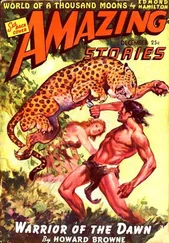At that same time, other humans who had kept spreading across Asia arrived at the farthest reach of Siberia. With the Bering Sea partly emptied, a land bridge 1,000 miles across connected to Alaska. For 10,000 years, it had lain under more than half a mile of ice. But now, enough had receded to reveal an ice-free corridor, in places 30 miles wide. Picking their way around meltwater lakes, they crossed it.
Chambura Gorge and Gombe Stream are atolls in an archipelago that is all that remains of the forest that birthed us. This time, the fragmentation of Africa’s ecosystem is due not to glaciers, but to ourselves, in our latest evolutionary leap to the status of Force of Nature, having become as powerful as volcanoes and ice sheets. In these forest islands, surrounded by seas of agriculture and settlement, the last of Pan priors other offspring still cling to life as it was when we left to become woodland, savanna, and finally city apes. To the north of the Congo River, our siblings are gorillas and chimpanzees; to the south, bonobos. It is the latter two we genetically most resemble; when Louis Leakey sent Jane Goodall to Gombe, it was because the bones and skulls he and his wife had uncovered suggested that our common ancestor would have looked and acted much like chimpanzees.
Whatever inspired our forebears to leave, their decision ignited an evolutionary burst unlike any before, described variously as the most successful and most destructive the world has ever seen. But suppose we had stayed—or suppose that, when we were exposed on the savanna, the ancestors of today’s lions and hyenas had made short work of us. What, if anything, would have evolved in our place?
To stare into the eyes of a chimpanzee in the wild is to glimpse the world had we stayed in the forest. Their thoughts may be obscure, but their intelligence is unmistakable. A chimpanzee in his element, regarding you coolly from a branch of an mbula fruit tree, expresses no sense of inferiority in the presence of a superior primate. Hollywood images mislead, because its trained chimps are all juveniles, as cute as any child. However, they keep growing, sometimes reaching 120 pounds. In a human of similar weight, about 30 of those pounds would be fat. A wild chimpanzee, who lives in a perpetual state of gymnastics, has perhaps three to four pounds of fat. The rest is muscle.
Dr. Michael Wilson, the curly-haired young director of field research at Gombe Stream, vouches for their strength. He has watched them tear apart and devour red colobus monkeys. Superb hunters, about 80 percent of their attempts are successful kills. “For lions, it’s only about one out of 10 or 20. These are pretty bright creatures.”
But he has also seen them steal into the territories of neighboring chimp groups, ambush unwary lone males, and maul them to death. He’s watched chimps over months patiently pick off males of neighboring clans until the territory and the females are theirs. He’s also seen pitched chimpanzee combat, and blood battles within a group to determine who is the alpha male. The unavoidable comparisons to human aggression and power struggles became his research specialty.
“I get tired of thinking about it. It’s kind of depressing.”
One of the unfathomables is why bonobos, smaller and more slender than chimps but equally related to us, don’t seem very aggressive at all. Although they defend territory, no intergroup killing has ever been observed. Their peaceful nature, predilection for playful sex with multiple partners, and apparent matriarchal social organization with all the attendant nurturing have practically become mythologized among those who insistently hope that the meek might yet inherit the Earth.
In a world without humans, however, if they had to fight it out with chimpanzees, they would be outnumbered: only 10,000 or fewer bonobos remain, compared to 150,000 chimpanzees. Since their combined population a century ago was approximately 20 times greater, with each passing year chances weaken for either species to be around to take over.
Michael Wilson, hiking in the rain forest, hears drumbeats that he knows are chimpanzees pounding on buttress roots, signaling each other. He runs after them, up and down Gombe’s 13 stream valleys, hurdling morning glory vines and lianas strung across baboon trails, following chimp hoots until, two hours later, he finally catches them at the top of the Rift. Five of them are in a tree at the edge of the woodland, eating the mangoes they love, a fruit that came along with wheat from Arabia.
A mile below, Lake Tanganyika flashes in the afternoon sunlight, so vast it holds 20 percent of the world’s freshwater and so many endemic fish species that it’s known among aquatic biologists as the Galápagos of lakes. Beyond it, to the west, are the hazy hills of the Congo, where chimpanzees are still taken for bush meat. In the opposite direction, past Gombe’s boundaries, are farmers who also have rifles, and who are tired of chimps who snatch their oil palm nuts.
Other than humans and each other, the chimpanzees have no real predators here. The very presence of these five in a tree surrounded by grass testifies to the fact that they’ve also inherited the gene of adaptability, and are far more able than gorillas, which have highly specialized forest diets, to live on a variety of foods and in a variety of environments. If humans were gone, however, they might not need to. Because, says Wilson, the forest would come back. Fast.
“There’d be miombo moving through the area, recovering the cassava fields. Probably the baboons would take first advantage, radiating out, carrying seeds in their poop, which they’d plant. Soon you’d have trees sprouting wherever there’s suitable habitat. Eventually, the chimps would follow.”
With plenty of game returning, lions would find their way back, then the big animals: cape buffalo and elephant, coming from Tanzania’s and Uganda’s reserves. “Eventually,” Wilson says, sighing, “I can see a continuous stretch of chimpanzee populations, all the way down to Malawi, all the way up to Burundi, and over into Congo.”
All that forest back again, ripe with chimpanzees’ favorite fruits and a prospering population of red colobus to catch. In tiny Gombe—a protected shred of Africa’s past that is also a taste of such a posthuman future—no enticement is readily evident for another primate to leave all that lushness and follow in our futile footsteps.
Until, of course, the ice returns.
CHAPTER 5

The Lost Menagerie
IN A DREAM, you walk outside to find your familiar landscape swarming with fantastic beings. Depending on where you live, there might be deer with antlers thick as tree boughs, or something resembling a live armored tank. There’s a herd of what look like camels—except they have trunks. Furry rhinoceroses, big hairy elephants, and even bigger sloths—sloths?? Wild horses of all sizes and stripe. Panthers with seven-inch fangs and alarmingly tall cheetahs. Wolves, bears, and lions so huge, this must be a nightmare.
A dream, or a congenital memory? This was precisely the world that Homo sapiens stepped into as we spread beyond Africa, all the way to America. Had we never appeared, would those now-missing mammals still be here? If we go, will they be back?

AMONG THE VARIOUS slurs hurled at sitting presidents throughout the history of the United States, the epithet with which Thomas Jefferson’s foes smeared him in 1808 was unique: “Mr. Mammoth.” An embargo that Jefferson slapped on all foreign trade, intended to punish Britain and France for monopolizing shipping lanes, had backfired. While the U.S. economy was collapsing, his opponents sneered, President Jefferson could be found in the East Room of the White House, playing with his fossil collection.
Читать дальше












